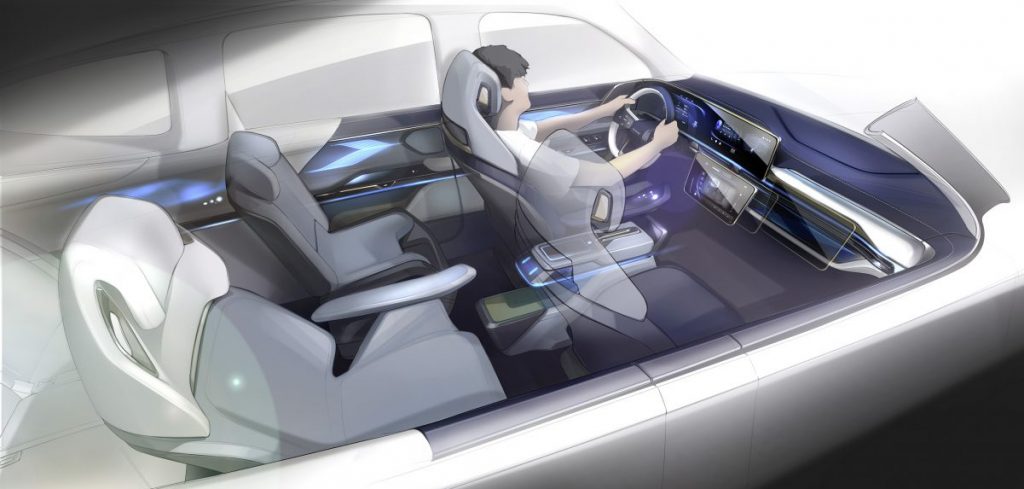Automotive interior specialist Yanfeng has shown off its XiM21 smart cabin concept. Through a focus on technology and in-depth consumer research, the company claims to have redefined its approach to the concept of smart cabins.
“At Yanfeng, we have been exploring technical, societal, and industrial trends as well as future mobility trends for years. With our XiM20 that we presented last year, we demonstrated our first smart cabin concept – a very visionary mobility experience for future autonomous ride-sharing. Today, the debut of our XiM21 is an example of our continued efforts to provide customers with the most advanced production-ready technologies and product solutions that are tailored for unique user experiences,” explained Tim Shih, vice president design and user experience at Yanfeng Technology.
The concept features a dual 12.3in curved display for the driver, which serves as a central control unit for the cabin environment, while an additional sliding 10.1in display in the instrument panel enables the front-seat passenger to engage and interact with the vehicle’s settings and infotainment system. The display also allows the front-seat passenger to keep an eye on children in the back and control the content they watch.
Through the use of integrated sensors and smart technologies, the company says the concept responds directly to occupants’ wants and needs. For example, by using pre-set preferences and adjusting to real-time inputs, the cabin tailors itself to its passengers. Via a mobile app, the driver can create a personal profile, entering their height, weight and a scanned image of their face. With this profile, the cabin automatically adjusts to its driver, generating an optimized seating and safety configuration.
The app also enables adjustment of the interior’s temperature, preferred scent or ambient lighting so users can pre-configure their vehicle before they board. A built-in child seat can also be controlled by the app, allowing parents to stow the child seat to create more space in the second row with the touch of a button. This powered child seat can then transform into a footrest for the third-row passenger when not occupied, and can also slide forward to facilitate ingress and egress to the third row.
“By combining physical features and digital intelligence, we can enhance the interactions between occupants, as well as between occupants and the vehicle itself. Our smart cabin concept XiM21 enables positive experiences onboard, whether for personal or business use, with family or with colleagues. From the overall concept down to individual technologies and features, the innovations integrated into XiM21 are selected and synchronized to support positive user experiences and truly demonstrate Yanfeng’s idea of ‘Smarter mobility together’,” commented Han Hendriks, chief technology officer at Yanfeng Technology.
Yanfeng also highlights that the cabin offers a flexible and multi-functional space to address different use cases and passenger needs. For example, the sliding floor console can move between the front and rear of the cabin when summoned, either via voice command or the touch of a button. In order to further enhance passenger well-being as well as seating comfort, Yanfeng says it has also developed a ‘Zero-Gravity Seat’ and when deployed in the reclining position, the first and third-row seats adjust automatically to maximize space for the reclining passenger.



